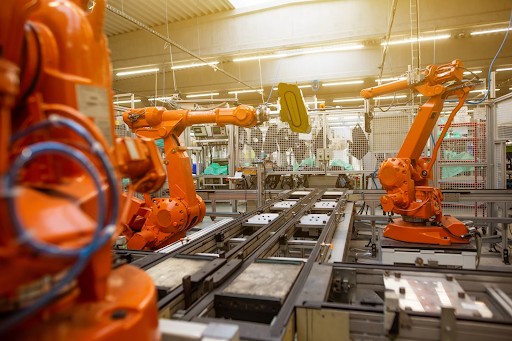How Cyber Insecurity Threatens the Future of Robotics in Industry

The rapid rise in sophisticated cyberattacks has placed a growing spotlight on the vulnerabilities of industrial automation systems. As robotic technologies become increasingly integrated across industries, they offer tempting targets for malicious actors seeking to disrupt operations, steal data, and demand ransom payments.
With a recent report from IBM indicating that the average cyberattack costs exceed $4 million, the time for companies utilizing robotics to beef up cybersecurity is now. Business leaders must prioritize proactive cybersecurity measures to safeguard their financial, operational, and reputational interests from the growing perils of cyber insecurity.
The Financial Impact of Cyber Insecurity in Robotics
While the operational disruptions caused by cyberattacks are widely recognized, the full financial toll on robotic systems is often underestimated. Cyberattacks on businesses come in all sizes and shapes, but all have the potential to wreak untold reputational, financial, operational, and other types of catastrophic damage. Inadequate cybersecurity protections expose businesses to a range of direct and indirect costs that can significantly impact bottom lines and potentially compromise operations into the future.
Direct Cost Analysis
Businesses may face immediate financial demands from ransomware attacks, where cybercriminals encrypt critical systems and data until a ransom is paid. Beyond that, the expenses required to recover and restore robotic infrastructure can quickly escalate. This includes the costs of data recovery, system repairs, and insurance premium hikes. Companies must also account for legal fees and potential regulatory fines from data breaches or compliance failures.
Hidden Financial Burdens
Indirect costs can pose an even greater long-term threat. Extended production downtime caused by a cyberattack can result in lost revenue and supply chain disruptions that ripple throughout the organization. Customers may also lose confidence in the company's ability to reliably deliver products or services, leading to market share erosion and reputational damage that is challenging to recover from. Collectively, these hidden financial burdens can significantly undermine a business's profitability and growth prospects.
Operational Risks: How Cyber Threats Disrupt Robotic Systems
Robotic systems contain unique cybersecurity vulnerabilities, which become serious operational risks extending beyond short-term financial costs for businesses. Bad actors can use various tactics to compromise the integrity and functionality of industrial automation, with devastating consequences for production continuity and worker safety. Two of the most important areas to be aware of are system vulnerability points and how cyberattacks impact production processes.
System Vulnerability Points
Robotic systems often rely on interconnected networks, legacy software, and remote access capabilities - all of which create potential entry points for cybercriminals. For example, weaknesses in the common OPC UA communication protocol have allowed hackers to gain unauthorized access to PLC controllers and manipulate industrial processes. As robotic systems become increasingly integrated with enterprise-wide IT infrastructure, the attack surface for exploiting vulnerabilities continues to expand.
Production Impact Assessment
A successful cyberattack on a company's robotic systems can have immediate and severe operational consequences. Production lines may be abruptly halted, as seen in the 2017 NotPetya attack that temporarily forced factories to shut down across Europe. Quality control processes can also be compromised, leading to defective products, safety issues, and brand reputation damage.
Reputational Damage and Its Long-term Costs
While a cyberattack's immediate operational and financial consequences on robotic systems are significant, the longer-term reputational impact can be even more debilitating for businesses. A single high-profile security breach can severely undermine customer trust and erode market confidence, with repercussions that can persist for years.
Market Trust Erosion
When a company's robotic infrastructure is compromised, it signals a lack of preparedness and competence in safeguarding critical systems. This can damage hard-earned B2B relationships, as partners and suppliers may reconsider their willingness to entrust sensitive data or collaborate on mission-critical projects. Customers may also lose faith in the company's ability to reliably deliver products or services, reducing brand loyalty and market share.
Recovery Timeline Challenges
Rebuilding a tarnished reputation in the wake of a major cybersecurity incident is an arduous and costly undertaking. Businesses have to allocate significant resources toward crisis management, stakeholder communications, and PR campaigns to regain market credibility. However, the lingering effects of reputational damage prove corrosive – they can hinder a company's ability to attract new customers, retain talent, and maintain its competitive edge.
Cost-effective Strategies to Strengthen Robotic Cybersecurity
While the financial, operational, and reputational consequences of cyberattacks on industrial robotics may seem daunting, there are pragmatic steps businesses can take to enhance their security posture without incurring prohibitive costs. Companies can more effectively mitigate risks and safeguard their robotic investments by adopting a proactive, multilayered approach to secure electronic assets.
Cost-effective strategies to employ include:
- Regular risk assessments: Regularly evaluate the cybersecurity vulnerabilities within robotic systems and supporting infrastructure.
- Robust access controls: Establish stringent access protocols, including multi-factor authentication, role-based permissions, and secure remote access methods to limit unauthorized entry points.
- Provide comprehensive training: Empower employees with cybersecurity awareness and best practices training to recognize potential threats and respond appropriately.
- Maintain robust backup and restoration protocols: Construct reliable backup systems and rehearse incident response plans to ensure rapid multipronged recovery from any successful attacks.
- Adopt industry-standard security practices: Stay informed on the latest cybersecurity protocols and technologies tailored for robotic environments, such as secure software updates, vulnerability assessments, and network segmentation.
Final Thoughts
Cybersecurity threats pose a grave risk to the future of industrial robotics, and neglecting this imperative exposes organizations to severe financial, operational, and reputational consequences. Business leaders must proactively address the vulnerabilities of robotic systems through a comprehensive strategy of risk assessment, access controls, and incident response planning. This commitment is essential for safeguarding the long-term viability and integrity of industrial automation.
Thanks for helping to keep our community civil!
This post is an advertisement, or vandalism. It is not useful or relevant to the current topic.
You flagged this as spam. Undo flag.Flag Post


